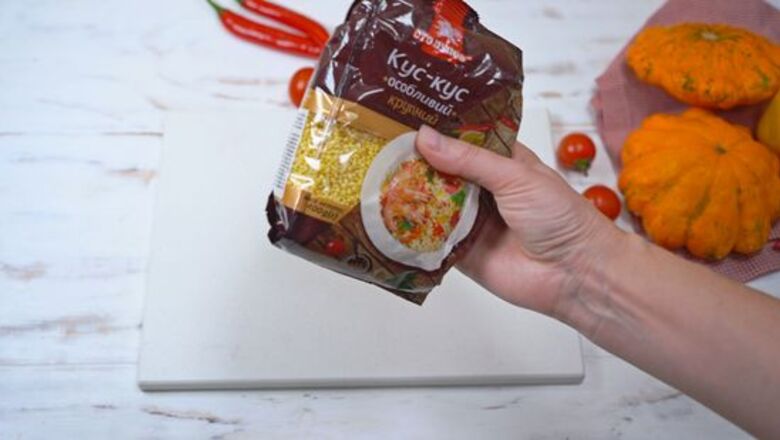
views
Getting Your Couscous Ready

Pick a non-instant couscous. If you are looking to add flavor to couscous, avoid the instant varieties. They cook too fast to really absorb flavors in the pot. Instead, opt for a non-instant couscous. Israeli couscous, which has larger granules, is especially good for picking up flavors and adding texture. While couscous looks and cooks like a grain, it is actually more of a pasta. Look for whole grain couscous to get more fiber and add some nutty flavors to your dish.
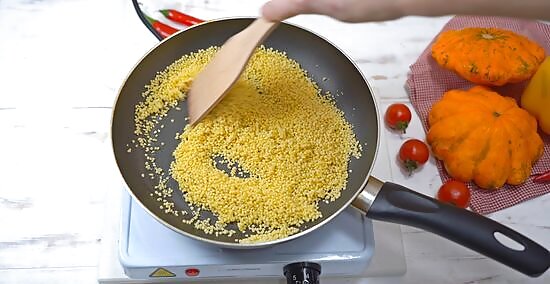
Toast the couscous before boiling it. Add a tablespoon of olive oil or a nut oil like pistachio or almond oil per cup of couscous. Toast the pasta on a medium-high heat for three to five minutes, until it is a light golden brown. This brings out some of the natural flavors and aromas in the pasta. Have your water or stock boiling in a separate pot before you start toasting. Couscous should go straight from the pan into a boiling liquid.
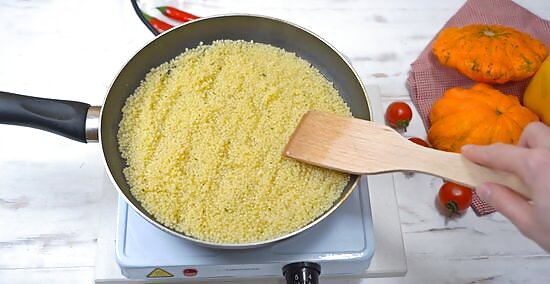
Boil couscous in a broth to make it more savory. Couscous will cook in water, but it tastes even better in a stock or broth. You want a little more liquid than is necessary to completely cover the couscous. This equates roughly to one and a quarter cups of broth or stock per cup of couscous. Chicken and vegetable broth both work wonderfully with couscous. They will add flavor and a bit of salt to your recipe without overwhelming other flavors. A broth made from bullion will work, but it will be saltier than a fresh broth. Avoid adding additional salt to a recipe made with bullion.
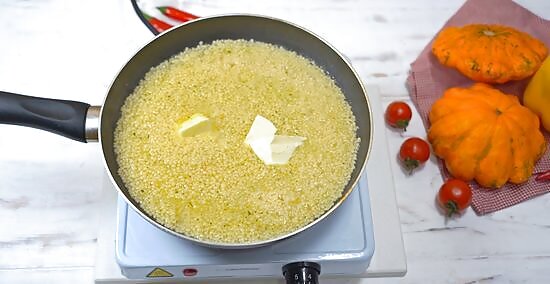
Season your water if you don't have broth. If you don’t have any broth or stock available, add flavor to your water. A couple of tablespoons of butter, and a quarter to a half a teaspoon each of onion powder, garlic powder, coriander, and dill can help liven up plain water.
Cooking Your Couscous
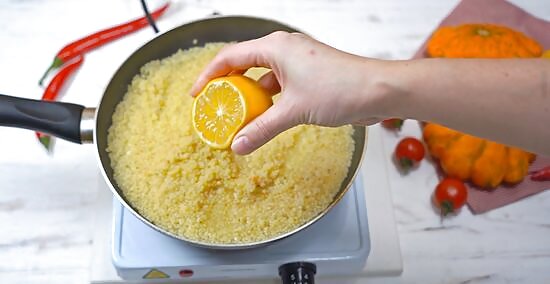
Add an acid to your couscous to fight salty flavors. When you cook couscous in a broth or stock, it can get salty. Adding an acid while the pasta cooks will help mask some of the salty flavors. If you plan to serve your couscous with meat, a squeeze of fresh lemon juice will do the trick. Other useful acids to serve in couscous include: About a quarter of a cup of white wine per cup of water A few tablespoons of white vinegar to cut salt without adding too much flavor A few tablespoons of balsamic or red wine vinegar for Mediterranean dishes A squeeze of lime juice for Southwestern sides or dishes that will include other fruit
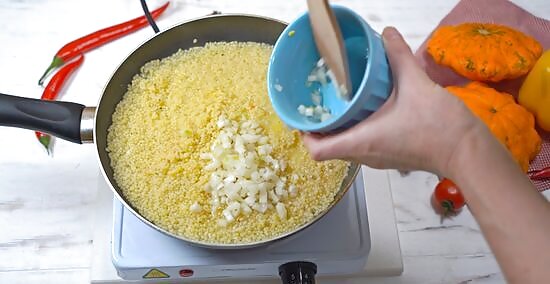
Add your favorite type of onion if you want more savory flavors. There are a lot of onions, and all of them go well with couscous. Add a clove or two of chopped up garlic per cup of couscous while the pasta is cooking to bring a mild, well-balanced flavor to your dish. You can also add: White onions for a stronger taste Shallots for a balanced savory and sweet flavor Leeks for a more mellow flavor, especially if you plan on adding fruit or herbs later
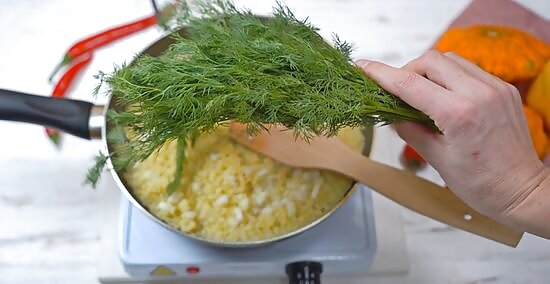
Throw in fresh herbs to lighten and brighten your dish. Herbs pull double duty in couscous. They add in flavor, and they bring in aromas that enhance taste as you eat. Add in a handful of fresh herbs like after your couscous has absorbed all its water but before you fluff it. Some herbs that pair well with couscous include: Mint for Middle Eastern inspired dishes Dill for dishes with a mild flavor, or those being served with fish Rosemary to brighten up a heavy dish Oregano to add depth to a light dish Basil for any Mediterranean or pilaf style dish
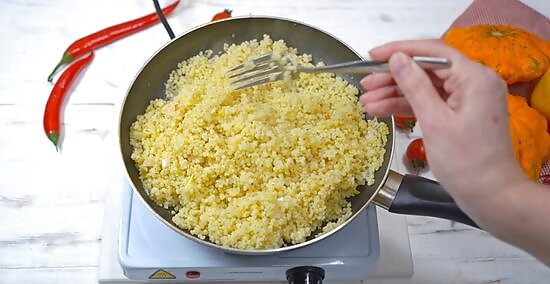
Fluff your couscous. One of the most common mistakes with couscous is forgetting to fluff. While this doesn’t add any new flavors, it helps separate the couscous granules. That, in turn, makes it easier to taste the flavor you have added. Once your couscous has cooked completely, take a fork and gently break about the grains. Do this until there are no large clumps left.
Finishing Your Couscous
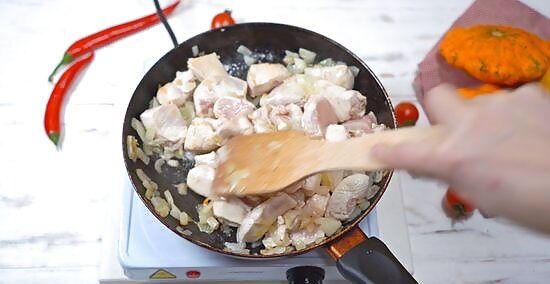
Add meat to make it a main dish. Couscous isn’t just a side. Add in a sausage like chorizo or sweet Italian sausage, or serve some chicken breasts over a bed of couscous to make it a main dish. The juices from the meat will absorb into the couscous, and the flavors added into the pasta while cooking will complement the meat. If you are a vegetarian, adding a roasted portobello mushroom is a great way to top couscous. You could also skip the meat entirely and add handfuls of fresh veggies.
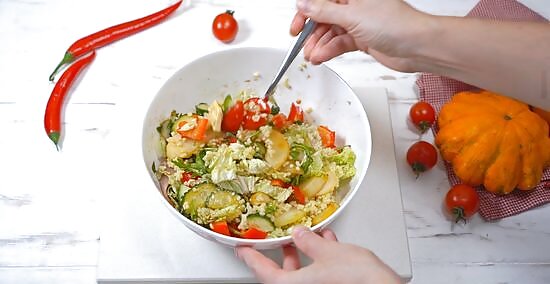
Mix in fresh produce for a couscous salad. Let your couscous cool for five or ten minutes. Then, add in as much fresh fruits and veggies as you want. Couscous is perfect for a grain salad, and it hold up against both sweet and savory. Bell peppers, cucumber, zucchini, and chopped spinach are all commonly seen in couscous dishes. You could also try produce like: Apples, which work well in dishes with sausage Dried apricots in Mediterranean or Middle Eastern inspired dishes Strawberries, which pair well with both balsamic vinegar and basil Any grilled vegetables to add a smoky flavor Cherry tomatoes, which can help balance a salty dish Snap peas or celery for a fresh touch
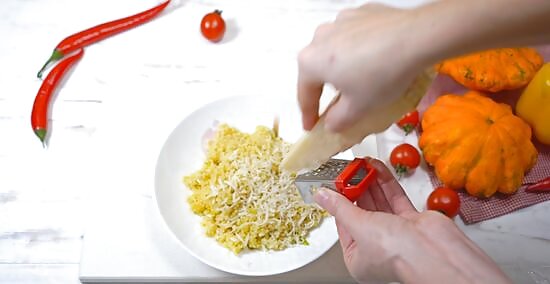
Grate some cheese if you want a thick, creamy taste. Too much cheese can overwhelm the other flavors you put in your couscous, but a little bit can enhance the work you’ve put in. Melt a handful of fresh grated Parmesan to a cup of couscous for a creamy, savory side. You can also add feta to give your couscous a bit of a bite.
Toss on some toppings for a bit of extra flavor. Add a final dash of flavor to your couscous by finishing it with a savory topping. Pine nuts, dried cherries, dried cranberries, pomegranate seeds, shaved Parmesan or Romano cheese, or sun-dried tomatoes all make excellent toppers. Pick one topping and add a small amount to your dish. These are all powerful flavors, so one serving size should be enough per cup of couscous.
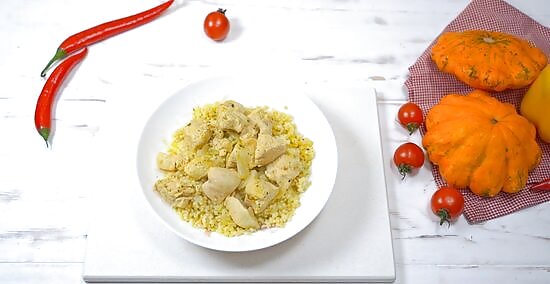
Finished.




















Comments
0 comment